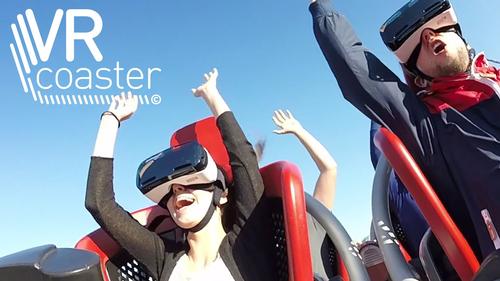08 Dec 2015
Exclusive: Mack currently developing at least nine virtual reality rollercoasters for major operators worldwide
BY Tom Anstey

Attractions Management can exclusively reveal that Mack Rides and VR Coaster are working on at least nine new virtual reality rollercoasters, with the new technology next being announced for a major attraction in January.
Mack and VR Coaster have been testing the emerging technology since 2013, with the first VR coaster making its debut at Europa Park in September to critical acclaim. Since then Mack has partnered with Cedar Fair, with plans to rollout the technology potentially to the operator’s 11 US locations including California’s Knott’s Berry Farm, though exact locations or numbers have not been confirmed.
The technology took centre stage at the recent IAAPA attractions expo, with a VR demo set up on Fun Spot America’s inverted rollercoaster the Freedom Flyer.
“We’ve had many skeptics asking us ‘why would you want to do VR on a rollercoaster?’ and as a result of the demo we received tremendous positive feedback,” said VR Coaster’s Thomas Wagner, inventor of the one-of-a-kind technology, speaking to Attractions Management.
“It’s a dynamic ride with a drop element, air time and a helix at the end so it’s more intense than the existing VR coaster at Europa Park. Using the technology you can take an old coaster and give it not only a new skin, but completely transform the way people perceive it,” he said.
Using precise synchronisation, riders are shown a 3D animated world, matching the basic track with the option to add in non-existent ride elements. Using VR the manufacturer can manipulate the rider’s perception of speed, height, length and dimensions, completely changing the layout and locale of the track.
“Putting the technology on a rollercoaster as opposed to just a computer screen means you get added elements like the wind in your face and g-forces,” said Wagner. “Though it might look like a simulation ride, we can do things that were never possible in that environment. When you ride a rollercoaster you experience zero gravity, floating airtime and real drops. When you combine this with the VR simulation it’s mind-boggling.”
Because the VR ride matches the movement of the rollercoaster, the sickness that can be associated with the technology is eliminated.
“You don’t get motion sickness because you’re not only watching 3D movement but you’re also feeling the real movement,” explained Wagner. Because of this you get no offset and don’t get dizzy. It’s not only comfortable, it’s really amazing.”
The demo installation at Fun Spot has since been removed from the park, but Wagner expressed his hope that the technology would be returning in the not-too-distant future.
“Fun Spot will be looking at the feedback they got from the test, from the industry and the people who tested it,” he said. “At the moment it was purely a demonstration but I would love to keep it at there as a lighthouse project. The test has gone viral online across social media sites like Facebook and Twitter so it’s a win-win situation for us and for FunSpot.
“We are currently working on nine coasters,” he continued. “We have clients all over the world. One of the major attractions will open up publicly in January but there will be many rides that will be coming up one after the other – we have our hands full.”
There is some indication that the January announcement would be for a rollercoaster at a major theme park in the UK, though Mack would not confirm this. The ride developer also revealed to Attractions Management that is working with several major IPs for branded VR ride experiences, which will be revealed in the coming months.
Close Window